"My ally is the force and a powerful ally it is."
Yoda to Luke Skywalker in Star Wars V: The Empire Strikes Back
Thank you for reading…
- The Introductory post about Choosing Change,
- Choosing Change #1: Safe People, Safe Places and Safe Processes
- Choosing Change #2: So what’s my reasonable contribution to your change process? (Part 1 of 2)
- Choosing Change #3: So what’s my reasonable contribution to your change process? (Part 2 of 2)
- Choosing Change #4: Gardening with Intention
- Choosing Change #5: Traveling with Intention
- Choosing Change #6: Schemas, Defenses, Distortions and Resolution (Part 1 of 3)
- Choosing Change #7: Schemas, Defenses, Distortions and Resolution (Part 2 of 3)

In Part 1 of 3 of our series we learned that our Maladaptive Schemas are “the operating system we were 'programmed' with, with frequent ‘uploads of good, bad, ugly or traumatic experiences’ that shape how we view ourselves, then determine how we'll interact with others in the life experiences we'll encounter."
We also learned that our Schemas will trigger our Maladaptive Schemas Modes, which are the predictable (and Emotionally Regressed (Session 3) ways that "we fight, take flight or freeze." We learned that we did this because in that very moment, we intuited that we needed to protect ourselves immediately, just like when we were exposed to a similar "bad, ugly or traumatic" life experiences that we encountered from our distant or recent past.

In Part 2 of 3 of our series we learned that our Ego Defenses are our unconscious psychological thoughts (and our eventual behaviors) that serve to protect the anxious, "vulnerable and child-like" part of us, especially when we feel anxiety or experience any uncomfortable feeling (i.e., hurt, pain, frustration, fear, suffering, etc.).
The featured image from Part 2 of 3 infers that like the soldiers, we too have acquired "mental arsenals of weapons" that we'll use to defend, deflect, deny, distort, delude or even dispute reality when it is perceived as a threat to us.
Some of us became very proficient with the use of these "defended ways of living" which again, were typically sought out and employed by the Adolescent part of us when we felt, perceived or interpreted that some aspect of life is creating an unsettling and distressful threat to our person.
(Note: Remember, in Ego State theory, we call the Adolescent "the Little Professor;" the "Full Professor" is the Adult Ego State. The role of the teenaged Little Professor is to protect the Vulnerable and Younger Child Ego state, much like an older brother or sister would protect their younger sibling.
As you could imagine, the solutions to problems that are posited by our Adolescent Ego state, albeit well intended, will always be immature in appearance and in nature when compared to the solutions that our Healthy Adult Ego state could provide to us.

In fact, if we get triggered and perceive that we're being threatened, in the blink of our eye we could slip into our Adolescent or "Death Star mode," where we'll "fire off" frustrating, painful, confusing or abusive "salvos" that do harm to others and are clearly regretful behaviors that we'd like to retrieve, all in a misguided effort to protect ourselves! Thats why we want to remain in and operate from our Adult Ego state as much as possible!).
So in summing up Part 1 of 3 and Part 2 of 3, when an unpleasureable emotion or life experience triggers our Schemas and Schema Modes, we may become Emotionally Regressed (i.e., feel like we're age 5, 10 or 15) and feel like we need to defend ourselves, which is when we'll employ the use of Ego Defenses or Cognitive Distortions in our misguided effort to "come to our own assistance."
As we learned in these two previous posts, a primary problem with this type of response is that it tends to be Adolescent in nature and appearance, which means that we'll not have the benefit of having our Healthy Adult Ego State present to help us to conceptualize then deliver a Healthy Adult response. It goes without saying that our Healthy Adult response will deliver the best and maturest response from us that more than likely could solve or resolve the situation(s) at hand.
Are we doomed to live a "Dark Side existence" or is there another way?

Thankfully, no matter what our past experiences have been, help is available to us so that we don't have to live by the tyranny of maladaptive schemas, modes, defenses and distortions any longer! Just as the Millennium Falcon helped in blowing up the Death Star (Star Wars VI: Return of the Jedi), we too can blow up that which has caused fear, frustration, hurt and harm to ourselves and to other "inhabitants of our personal galaxy."
So in this last post of our series (Part 3 of 3), we're going to take a look at how our Healthy Adult Mode (or Healthy Adult Ego State) could intervene and help us when our Schemas, Modes, Defenses and Distortions flare up and threaten to derail us from accomplishing our resolve to live and practice healthy, adaptive, adult, mature and functional decisions in our lives.
When we do this, that is, operate in our Adult mindset, we'll notice that our behavior becomes consistent, reliable, dependable and predictable, which are all characteristics or "ingredients" of trustworthiness. Practicing behavior that is trustworthy breeds success because we're living by the personal values and virtues that not only make sense to us but also help us to obtain better and productive outcomes in all our affairs!
Like the other featured images in this series, the explosion of the Death Star is synonymous with what we wish to accomplish with our Healthy Adult Ego state (or our Healthy Adult mode, which are one in the same): We want to eradicate any unproductive cognitive and behavioral processes which cause us to war against ourselves and also inhibit our ability to live by the personal values that afford peace, love, respect and health to ourselves and to the people we love.
So one of the primary goals in this post is to eliminate "Death Star thinking, behavior and processes,"

where, like Anakin Skywalker on his way to becoming Darth Vader, we've allowed pain, suffering, fear, anger, grief, jealousy, shame, aggression and emotionally regressive processes to facilitate "dark side" dynamics to influence the thinking between our ears and maladaptive behavior within our relationships.
These dark, twisted but clinically predictable processes unfortunately led Anakin to engage in behaviors which were not congruent with his personal goals to function as a productive "Jedi Knight" and these same processes, if left unchecked in us could cause us to experience similar, predictable and regretful outcomes in our lives and relationships as well.
Thankfully, theres another way for us to achieve constructive outcomes when our pain, suffering and fear threaten to derail our thinking into maladaptive, dark, immature, compulsive and dysfunctional responses.
In Seasons of the Heart (1987), Dr. John Powell helps us to realize that we can and need to learn something from our pain, versus avoiding the messages embedded in it:
"Pain in itself is not an evil to be avoided at all costs. Pain is rather a teacher from whom we can learn much. Pain is instructing us, telling us to change, to stop doing one thing or to begin doing another, to stop thinking one way and begin thinking differently. When we refuse to listen to pain and its lessons, all we have left is to become an escapist. In effect we have said: I will not listen. I will not learn. I will not change."
So as we go forward, here's an important point: Its my hope that you'll establish as a personal goal the desire to end in real time any unproductive, negative and painful processes connected to your maladaptive schemas, modes, defenses and distortions.
In order to accomplish this goal you'll want to lean into, embrace and learn from any uncomfortable feelings (i.e., frustration to fear or from self-pity to pain).
Doing this in real time presents us with the opportunity to immediately replace outdated and destructive processes with healthier, functional, empowering, spiritual, life supportive and affirming processes to live by.
If we can change our thinking then we can change our actions; if we can change our actions then we can achieve better outcomes and conclusions for ourselves and the situations that are plaguing us. I'm inspired about what our minds are capable of, as I consider this quote by Rene Descartes, the father of modern philosophy:
"For to be possessed of good mental powers is not sufficient; the principal matter is to apply them well. The greatest minds are capable of the greatest vices as well as the greatest virtues."
If our thinking can help us to change and heal what was negative from our past into something that is pleasingly positive in our present, then we'll become wise, or "skilled at living," which is the meaning of the Greek word Sophia. We can do this, but we'll need some help. We'll need some very valuable assistance but believe it or not, most of that assistance is actually located and to be found in you!

In a moment we'll take a look at characteristics, components and qualities of our Healthy Adult Ego State but before we do that, I want to challenge you to use your mind energy to cultivate, develop, grow then draw upon these characteristics to help yourself, versus using your mind energy to develop character flaws and defects that only serve to hinder you and harm others near and dear to you.
Like the Jedi Knights who were on their own Hero's Journey, I hope you'll make the deepest commitment to cultivate a serious mind whereby you'll plant values and characteristics then use the energy provided to you by your Higher Power to create versus destroy, to find versus flounder, to repair versus refuse, to love versus languish and to resolve versus remain reckless.
Do you believe that "The Force" is with you in your endeavor to "plant in your mind" (the Greek word is Noutheteo) those excellent, valuable and virtuous qualities and characteristics that could help you to become personally successful with your behaviors and also provide edification to others in your life journey? Will you continuously tap into the Power that is greater than you to restore you to sanity, as evidenced by sane thinking and sane behaviors? Consider the inspiring words of the Apostle Paul from the Bible, and its my hope that with the passing of each day, you'll experience the heartbeat behind the words:
"I can do everything through Him who gives me strength" - Philippians 4:13 (TNIV)
We'll talk about other helpful tools and processes to equip your Healthy Adult for your own journey, however before we do, I'd like to underscore that the Force, Spiritual Empowerment, God or Your Higher Power will prove to be key to your growth, maturation and progress, much like sunlight, water and various minerals (elements which are not man-made) are key to the cultivation and maturation of any seed (i.e., value) that we wish to "plant, grow then harvest" in the energetic and powerful soil of our brain. Keep this in mind as we get started!
Draw Wisdom, Comfort and Love from your Positive and Constructive Schema Modes!
I probably don't need to remind you that you already have these modes either laying "dormant" (or actively working within you), but if I do need to remind you I will: You already possess positive, thoughtful, constructive and nurturing schema modes within you that are to be celebrated, protected and are to be called upon for wisdom and guidance each and every day!

These schema modes are the Adult parts of you that are thoughtful, kind, nurturant and considerate that you'll want to continue to develop and use in your own “reparenting” efforts!
We all have this Adult within us and its the Healthy Adult part of you that "intervenes, comforts and consults" with the Vulnerable Child part of you in order to "protect, provide and pilgrim" with him or her, in the blink of an eye, because we all need this type of "unconditional positive regard" assistance and guidance on a daily basis throughout our life journey.
Like Yoda or any seasoned Mentor who shows up at the right time, with the right tone, providing the right touch, with the right insight along with the right comment or tool to help us, we'll need to frequently access and consult with this vital, healthy and right part of ourself.
The "payoff" for accessing our Healthy Adult mode in real time is threefold:
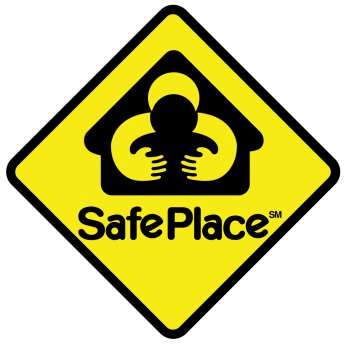
First, when we feel feelings of fear, confusion, anger, shame or despair that may have been triggered by any mode (i.e. Defective, Failure, Punitive, Mistrusting) then our Healthy Adult mode is the Safe Person who immediately ushers us into our Safe Place in order to facilitate a Safe Process for us to calm down, become grounded, experience love, care, compassion, validation or any other intimacy need that immediately helps us.
Equally, as mentioned earlier, could you see how your Higher Power is a vital part of this step? In any moment when we feel hurt, vexed, misunderstood or in pain, we may need Peace, Calm, Empowerment, Comfort, Empathy or Understanding, which are all nurturing qualities of a loving and benevolent Higher Power freely given to us!
So remember, Safety is always the first step to be delivered in our Inner Child - Healthy Adult consultation as it facilitates the necessary right brain experience that precedes any "left brain logic," which we'll need for guidance, which happens to be the second payoff in this process.

The second payoff for accessing our Healthy Adult mode in real time is when we become calmer (and with the continued assistance of our Higher Power), we obtain a clearer vision of what steps we need to take or what decisions we need to make immediately in order to "travel with intention." Traveling with Intention means we gain insight and perception when we're calmer but then we immediately act to implement the values that are important to us and will create problem resolution...immediately!
In those critical moments when we feel inner conflict or encounter interpersonal conflict with another, we'll take 3 - 4 deep breaths which will help us to immediately create safety and physiological calm within ourselves.
After we've created safety and calm for ourselves our Heathy Adult mode reminds us that if we're heading in the wrong direction with our thoughts and behavior that we can immediately "create the stop," exit the train, walk across the platform and board the correct train thats traveling in the right direction and subsequently obtain the cognitive and behavioral outcomes that are immediately useful to us and others! Isn't is remarkable how our brain could work to come to our assistance versus defaulting into the ditch of defensiveness and distortion or any of the other Killer D's?
Our Heathy Adult mode also reminds us that we operate by the 66% - 33% Solution, which means we access Insight and Empowerment from our God (the 1st 33%; "Love God"), then apply that Insight, Love and Empowerment to ourselves for our own personal benefit (the 2nd 33%; "Love Self").
The "66%"combination provides insight to us to adequately determine what our next action step is, that is, whats an appropriate and reasonable response to give to others, because we love them ("Love Neighbor as Ourself" - 33%), however, we don't need nor want to overextend ourselves and try to do too much for them.
By living and operating by the 66% - 33% Solution, our Healthy Adult mode ensures that we'll remain inspired, engaged in healthy forms of self-love, and because our Left and Logical part of our brain is engaged, we'll mindfully take deliberate steps to not overextend ourselves when others want a greater percentage of our time, resource or "to drain our emotional reservoir" because imbalanced actions and behaviors could be unhealthy for us.
So do you remember the table below? Here's some of the other gifts that our Healthy Adult Ego state (mode) facilitates for us. Some of the best gifts we could give to ourselves and to others is for our Healthy Adult Ego state (mode) to help us become "Middle Column people."
Having a Healthy Adult "Mentor" operating and guiding us to become proficient with Analyzing what went wrong, Collaborating with others regarding how to repair the problem, Helping us to collaborate together to work on growing solutions, etc. is empowering. This mode also helps us to not feel stuck or lost but on the other hand, provides us with constructive alternatives to channel our energy effectively so we're able to generate constructive outcomes and be successful with our endeavor to travel with intention!

So remember, Insightful, Logical and Practical counsel is always the second step to be cultivated in our Inner Child - Healthy Adult consultation, as solutions to our problems are typically generated and identified when internal safety has been achieved. Using time-outs effectively to create a safe place to experience internal calm is the best way to "fire up" the logical, left side of your brain to receive insightful guidance thats always helpful to us!
Finally, the third payoff that comes from accessing our Healthy adult mode in real time is that we get to become adept with practicing, developing, operating and living by values, virtues, ethics and principles that make sense to us and are productive for us.

Living by our values helps us to create and generate beautiful pictures of how we'd like for our lives and relationships to look, one conversation, one encounter, "one brushstroke" or one day at a time.
Like the artist who obtains assistance and guidance from his or her Healthy Adult (or Higher Power), we get to create a beautiful picture, portrait or tapestry of who we are and what we'd like to become, so that at any point in our life process, we can step back and appreciate what we've accomplished, but also access wisdom, insight and guidance to add to the picture if we determine that something is missing or is needed.
When we listen to the Healthy Adult mode part of ourselves in our Adult - Inner Child consultation, we'll discover that our Adult is on our side, won't let us down and desires whats good for us, which is to live according to the values that create positive and constructive outcomes for us to "upload" into our memory bank (or to stay with the painting analogy), to add to the portrait of who we are.
A simple example of this would be the next time that we (or others) are feeling fear, pain or suffering, we'll respond by demonstrating the skilled and "valuable" behaviors of empathy, sympathy and compassion (versus attacking, indifference, criticism or disregard), largely because these are the values that we've added to our life and have become a part of the portrait of who we are, the portrait of our life.
Once our identified values become an integrated part of who we are, we can produce them instantaneously because our Healthy Adult helps us to think through and provide the right response(s) at the right time because we've "stocked the cupboard of our mind with these useful ingredients."
Equally, like the artist who is still working on the portrait of his or her life, we can add or improve upon parts of our life when we've determined that we need personal improvement. Keep in mind that our Healthy Adult reminds us that our personal need to improve doesn't need to be frightening because the outcomes that we'll experience when we change are usually fruitful and rewarding.
When we become adept at our "Healthy Adult - Vulnerable Child" consultations that occur in "real time," we'll probably begin to feel better about ourselves and our interactions with others because in essence we're living by the "A-C-T-I-V-E" model.
Before we conclude this post with a detailed exploration of the "A-C-T-I-V-E" model, lets identify some other useful, practical and vital characteristics and operations of our Healthy Adult mode!
Characteristics of our Healthy Adult Mode
Its important to know that our Healthy Adult mode helps us by employing the components of the “A-C-T-I-V-E” model, and then some. As a precursor to employing the A-C-T-I-V-E model, the Healthy Adult mode helps us to “remain A-C-T-I-V-E” by employing and operating by the following principles.
Remember, we're working to make progress with any and all of these new processes in our lives. Be gentle with yourselves as you identify, implement, grow and "harvest" these fruitful behaviors.
1) The Healthy Adult nurtures, validates and affirms the Vulnerable Child mode within us and sets limits for the Angry Child modes that may surface.
2) The Healthy Adult promotes and supports the Healthy Child mode and combats and eventually replaces the Maladaptive Coping Modes and Maladaptive Coping Responses.
3) The Healthy Adult neutralizes or moderates the Maladaptive Parent modes, largely by integrating truth and factual data that challenge any possible cognitive distortions.
4) The Healthy Adult practices thinking, engages in problem-solving as well as decision making before acting in order to effect solutions in their life and in relationships.
5) The Healthy Adult is appropriately ambitious, sets limits and boundaries, nurtures their self and others and works to form healthy relationships.
6) The Healthy Adult takes on responsibility, sees things through and enjoys/partakes in enjoyable adult activities and interests with his or her boundaries (i.e., talking, listening, physical, emotional, sexual, etc.) enforced.
7) The Healthy Adult takes care of her or his physical health and values her or himself.
8) The Healthy Adult works to forgives the past and no longer sees him or herself as a victim (but as a survivor) and expresses all emotions in ways which are healthy and cause no harm to self or others.
9) The Healthy Adult performs appropriate adult functions such as working, parenting, taking responsibility and committing. When in this mode, the Healthy Adult pursues pleasurable adult activities such as sex, intellectual, aesthetic and cultural interests as well as health maintenance via athletic and wellness activities.
10) The Healthy Adult focuses on the present day with hope and strives toward the best tomorrow possible.
So I have a few questions for your consideration: Which functional characteristics of the Healthy Adult Mode will you practice in order to create or facilitate fulfillment of your needs and any resolution that you're needing with your problems? After you validate yourself for doing and living by any of the above mentioned principles, which ones might you seek to develop, because they'll prove to be useful to you?
So lets have some fun with this. I've put together an "A-B-C" list of Healthy Adult Mode characteristics and behaviors. Take what you can use, leave the rest but above all else, have fun "rekindling" the insightful, empowered, wise, practical and fruitful person that you've always envisioned yourself becoming!
Dr. McGill's "A – B – C’s of the Healthy Adult Mode"
Below are some suggestions which could help you to stay in and function effectively in your Healthy Adult mode. Your Healthy Adult mode is the only mode in which legitimate Adult (versus Child-like") solutions could be conceptualized and realized personally and relationally.
Healthy Adults…
A: …Become AWARE of their frustrations connected to unmet needs as well as subtle shifts in their mood which could derail calm, trigger an old schema or coping mode and subsequently sabotage their focus and efforts. Developing personal awareness regarding fluctuations with their thinking and emotions is the cornerstone of the "A-C-T-I-V-E" model.
B:…Implement BOUNDARIES (i.e., talking, listening, physical, emotional, etc.) to create the safety, space and opportunity to experience inner calm and a break from any unnecessary drama, which are both crucial to successfully interrupting a "runaway" schema.
C:…Restore internal CALM, which helps to successfully regulate their self, which helps them to stay in the Adult Problem Solving mode. You're encouraged to Breathe, Pray, Self-Soothe, Visualize and engage in other grounding behaviors to create internal safety.
D:…When calmer, DISPUTE the false beliefs, cognitive distortions and ego defenses that are triggered and activated by their maladaptive schemas and coping modes.
E:…When calmer, practice the “EMPOWERING E’s” immediately (Encouragement, Empowerment, Empathy, Effort, Equality, Edification, etc.), which help to humanize yourself and treat others humanely. Humanizing yourself and others ensures that you're practicing and living by your adopted Values.
F:…Work to understand all the FEELINGS associated with "each person’s side of the coin," or the issues that are impacting them. This inclusive approach ensures you won’t run the risk of becoming abusive by only focusing on what matters to you.
G:…Consider how GOD (one's Higher Power) informs and directs them. This form of spiritual empowerment facilitates clearer thinking and endurance to carry out the correct course of action when resolution or reconciliation is sought or needed.
H:…HELP themselves by taking responsibility to ensure their own important "intimacy needs" (i.e., Attention, Safety, Understanding, Reasonable Expectations, etc.) are met. Being assertive not only ensures you "come to your own assistance," but it also reduces future episodes of "Victim posturing" or "Rescue baiting" behaviors.
I:…Will INVESTIGATE and INTEGRATE factual data and behavior that is presented or discovered, which could help to explain behaviors that appear problematic and tend to trigger maladaptive modes and responses.
J:…Know that JUSTIFICATION, Rationalization, Minimization, Denial and other Ego Defenses block their personal progress as Ego Defenses are typically utilized to deflect rather than embrace personal responsibility.
K:...Become KNOWLEDGABLE regarding how their own (but sometimes others) maladaptive schema modes could derail their ability to resolve problems. Insight, Perception and Recognition are helpful characteristics that are utilized by our Healthy Adult Ego state to facilitate personal awareness.
L:…Draw LIMITS when coping responses like Aggression, Overcompensation, Avoidance, Stimulation-seeking, Domination and Compliance surface behaviorally. "Retiring" then replacing outdated and dysfunctional coping mechanisms with adaptive and functional behaviors is a benefit of Healthy Adult mode living.
M:...Labor to ensure they are aware of how they may be MISPERCEIVING, MISREADING or MINIMIZING factual data that could reinforce their maladaptive schema modes.
N:…NEUTRALIZE the Negative mode, NURTURE the Vulnerable Child within, in order to NEGOTIATE Adult outcomes because today they NAVIGATE, practice and live by Heathy Adult principles.
O:…Realize that OVERCONTROLLING and OVER-COMPENSATING modes originate in childhood and may be a repetition of an earlier trauma from that time period thats being currently triggered..
P:…Engage in PROBLEM SOLVING versus stirring up Projection (Ego Defense), Perfectionism (Over-compensator), Performance (Unrelenting Standard), Procrastination (Hypocriticalness) or any Punitiveness/Critical Parent schemas and modes.
Q:…QUESTION why possible maladaptive schema domains like Disconnection and Rejection, Impaired Autonomy and Achievement, Other-Directedness and Hypervigilance occur, then move to correct them by applying appropriate behaviors that are more in accordance with their stated values.
R:…Know that ROME wasn't built in a day (but they were laying bricks every hour). This means that Healthy Adults are aware of the continuous work that will be necessary to remain "A-C-T-I-V-E" to meet their goals and subsequently to thrive in their Adult Mode.
S:…Facilitate SAFETY, because the practice of this value will determine if you're able to accomplish any of your objectives as a Healthy Adult (versus having your Vulnerable Child "hijacked" and whisked away on the Emotional regression train).
T:…Labor to see the whole TRUTH involved in all situations, not just the convenient, narrow, fragmented and "tunnel vision" version of truth that typically is introduced by the presence of our maladaptive schemas and modes.
U:…Challenge the UNCONDITIONAL RIGID BELIEFS and feelings about their selves and others and replace them with newer, nurturant, balanced and informed Healthy Adult schemas based in truth and love for their self and others.
V:…Live by VALUES that are important to them. Practicing Values that bring order, dignity and respect to your life helps to eliminate maladaptive schemas and modes that deserve to be rewritten. You've also determined that if you're going to expend any energy growing any type of behavior, growing Values that makes sense to you is always the best use of your energy (i.e., growing Availability, Creativity, Determination, Empathy, Gratitude, Mercy, Restraint, Trustworthiness, etc.).
W:…Feel WORTHWHILE, content, connected, satisfied, fulfilled, strong and capable when they protect, nurture and work to meet the core needs of their Child Schema.
X:…“EXIT” the toxic tyranny associated with old, useless and harmful schemas by rewriting their "Bill of Writes," which is the new constitution they've elected to live by. The new Bill of Writes comprises functional, honorable and esteeming behaviors that are based on the Values that need to be in their updated "Version 2.0." Rewriting, implementing and operating by this new Constitution is empowering.
Y:…Focus on becoming “WISE”(oops "YYY's") Adults, which means like the Artist, they'll develop the ability to discern then apply the right "brushstroke behavior" at the right time in their life situation, because they realize that specific behavior is necessary and appropriate for that particular situation that they're currently in (e.g. hugging versus berating a child when they're frightened or exploring the reasons for fear versus ignoring or denying it).
This new "Artisian" behavior is actually the "word picture" for the word Wisdom (Greek word Sophia) which means you're becoming “skilled at living” by applying the appropriate behavior as the life and relationship situation dictates.
Z:…ZOOM in quickly to develop awareness and insight regarding how they may have defaulted into a schema. Instead of remaining on the "Emotional Regression train" which could lead to resentments in your relationships, your Healthy Adult prompts you to engage in solution-oriented thinking (a sign of course correction) to redirect your energy and effort to use your resources to effect a different and more than likely, optimal outcome with your behavior.
Healthy Adult Activity (The "A-C-T-I-V-E” Model)

Take a look at the picture of the field thats been freshly plowed. Do you remember the old saying "the land is teeming with energy?" Most of us would take a look at this fertile soil and think we could grow anything in it!
Well, this photo is actually a word picture (and definition) of our English word "Active." The Greek word for Active is "Energes," and you could probably see another English word embedded in the Greek word: Energy.
Dr. Spiros Zodhiates defines Energes as "active, powerful, effective and work." Merriam-Webster defines Active as "characterized by action rather than contemplation and speculation; producing or involving action or movement; marked by vigorous activity; requiring vigorous action or exertion; having practical operation or results."
This is exactly what we hope to experience as we make a commitment to apply the "A-C-T-I-V-E" model in our lives: To experience fruitful growth by "planting and nurturing" knowledge, experiences, treatments, processes, values, virtues and behaviors into our being in order to actively and consistently produce change, healing and growth for ourselves and others who are important to us.
As mentioned in the previous posts (Choosing Change: Schemas, Defenses, Distortions and Resolutions, Part 1 of 3 and Part 2 of 3), employing the "A-C-T-I-V-E" model helps us to remain active in our process of doing something constructive with our thoughts, feelings and behaviors especially when we notice the presence of these "unwanted weeds" (i.e., schemas, schema modes, defenses and distortions) popping up in our mental garden.
This integrated model also embraces the concept of Neuroplasticity with your Brain, as your mind (and soul and spirit) is the freshly plowed land that's teeming with energy thats capable of producing and growing new insights and behaviors, regardless of your past or recent life experiences.
So in closing this post, I encourage you to use this model to obtain additional information and strategies that our Healthy Adult mode could utilize as we endeavor to "extract 'function' from any 'dysfunctional' behavior" thats been sabotaging our effort to live a constructive, focused, enjoyable, mature and rewarding life.
What follows is a brief explanation of the model, which contains suggested goals, activities and skills associated with each of the six parts of the model, accompanied with a few process questions and some practical applications.
Final thoughts before introducing the "A-C-T-I-V-E" model:
Keep in mind this is "a model and not the only model" for changing and improving your behaviors. It goes without saying that the disciplines of Psychology and Theology along with Addiction and Trauma treatment models have contributed rich and excellent resources that I'm not ignoring nor replacing with the introduction of the "A-C-T-I-V-E" model.
This model may work for some of you, and for others, you may only receive a partial benefit as you apply the strategies in your life. Still, I encourage you to diligently work in each of the six areas of the "A-C-T-I-V-E" model in order to benefit from your labor, but I'll respect your decision to "take what you can use and leave the rest" if this works best for you.
Thankfully, I'm hearing and I've heard from others who have applied this integrated model into their life and its helped them to accomplish just what the model is created to accomplish: Becoming a healthy human being and a functional Adult. My hope is that you too will receive similarly positive results!
The "A-C-T-I-V-E" Model encourages you to...
A: Be AWARE of how schemas from your past experiences could be sabotaging your current efforts. We’ll want to be AWARE of how our old maladaptive schemas and thought patterns that were “uploaded and/or programmed” into us at a younger age are currently operating and sabotaging our efforts by triggering episodes of Emotional Regression and by activating maladaptive schema modes.
These internal processes threaten to sabotage our ability to come to our own assistance and to the assistance of our relationships. Once we’re aware of which Schemas and Schema modes are “triggering and firing,” we can…
C: CHALLENGE, CHANGE and replace the unwanted Schemas with adaptive and Healthy Adult mode behaviors that work! This means we’ll need to work hard to identify, change and convert negative personality traits into productive and positive traits that are life-giving and life-affirming to us and to others. As we do this, we’ll want to…
T: TERMINATE any destructive Ego Defenses or Cognitive Distortions that our maladaptive schemas want to use to “protect” us, but really keep us stuck in child-like ways of operating. Being aware of then challenging, changing and replacing distorted thinking and defensive reactions helps us to transition from being “reactors to actors.”
As Actors we’re consciously and responsibly involved in our own change, healing and growth processes. What really helps our process to gain momentum is to…
I: INVESTIGATE what Adult Values and Virtues make sense to us and are reasonable for us to develop and incorporate into our lives on a daily basis (especially to counterbalance our maladaptive schemas and maladaptive schema modes). Identifying values that help to protect, affirm, nurture and breathe life into us while also guiding us to develop loving, meaningful and mature relationships is what our Healthy Adult mode (and our Higher Power) is capable of giving to us.
Once these “very valuable values” are identified, we afford ourselves with the opportunity to reap and benefit from living a value-filled, value focused and empowered life! But investigating and identifying the values is only the first step. After this, we’ll want to…
V: VALIDATE ourselves by consistently living according to values, virtues and ideals that are sensible, reasonable and functional for us and others. On the surface this seems like an easy choice to make. However, when the “Tyranny of the Shoulds, Musts and Oughts” resurface, they try to hijack us from functional and intentional living because our schemas and schema modes tend to trigger emotional regression, which facilitate immature and child-like reactions.
Daily practice of our Values provides us with empowering reminders that we have choices, opportunities and abilities as Adults to make informed and responsible decisions to protect, love, nurture and guide us in our efforts to become Wise or “skilled at living.” Finally, what makes being “A-C-T-I-V-E” a success is being in a continual mindset to…
E: EVALUATE if our choices and behaviors are helping us to achieve the outcomes that we want and are working toward. The English word “Evaluation” comes from the French word “Evaluer,” which means “to find the value of.” What this means is that most of the choices that we make based on practicing our values will yield very productive outcomes for us.
However, when our choices cease to provide the optimum changes that are good for us and others, we evaluate then recalibrate to make any necessary changes to stimulate productive growth outcomes per our values for ourselves and others.
Living in the Healthy Adult mode means we enjoy the fruit of our labor by practicing, extracting and enjoying the benefits that come from choosing to live by our values!
Thats it folks! Thats the "A-C-T-I-V-E" model. Short, sweet and seemingly simple however, like the field thats freshly plowed, we have some work to do in this season and the next, in order to not only survive, but to thrive! Enjoy the fruit of your labor!
Here are some practical applications with the "A-C-T-I-V-E" model:
The "A-C-T-I-V-E" Model (Goals, Activities and Skills)
1) AWARE: Be AWARE of how schemas from your past experiences could be sabotaging your current efforts.
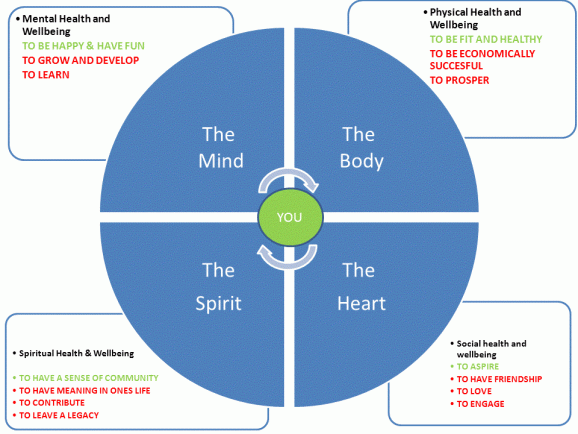
Goal (Aware): Increase our awareness skills in order to identify how negative , harmful and possibly traumatic processes and experiences from our past are currently interrupting our "biological - psychological - social - spiritual" (or "bio-psycho-social-spiritual") growth.
Activities (Aware):
a) Identify which of the 18 Maladaptive Schemas or Schema Modes are impacting your current thoughts and behavior (if you need to review their description, click here):
- Abandonment/Instability
- Approval Seeing/Recognition Seeking
- Defectiveness/Shame
- Dependence/Incompetence
- Emotional Deprivation
- Emotional Inhibition
- Enmeshment/Undeveloped Self
- Entitlement/Grandiosity
- Failure
- Insufficient Self-Control/Self-Discipline
- Mistrust/Abuse
- Negativity/Pessimism
- Punitiveness
- Self-Sacrifice
- Social Isolation/Alienation
- Subjugation
- Unrelenting Standards/Hypercriticalness
- Vulnerability to Harm or Illness
- "Fight" Schema Modes:
- Critical Parent
- Punitive Parent
- Angry/Enraged Child
- Impulsive/Undisciplined
- "Flight" Schema Modes:
- Detached Protector
- Spaced Out Protector
- Angry Protector
- Detached Self-Soother
- "Freeze" Schema Modes:
- Compliant Surrenderer
- "Poor Me" Victim
- Surrender to Damaged Child
- Overcompensator Schema Modes:
- Attention and Approval Seeking
- Self-Aggrandizer
- Suspicious
- Compulsive
- Perfectionistic
- Worrying
- Scolding
- Rationalizing
- Vulnerable Child Modes:
- Lonely Child
- Abandoned Child
- Humiliated/Inferior Child
- Dependent Child
b) How are your identified schemas and schema modes interrupting your ability to remain in your Adult mode? What do you think are your underlying but important needs that you attempting to satisfy "maladaptively?
c) Embrace any behavior and process that helps you to become mindful about your thinking, feelings and behaviors, especially with your schemas. I've encouraged others to look at these words that help to develop self-awareness processes, in addition to these Emotions and Feelings Charts and this information for growing our Emotional Self-Awareness. This self-help link provides rich and practical material on the subject of Mindfulness and how to grow in the practice of being Mindful.
d) Remember, since we think better when we feel Safe, I encourage you to engage in any process that helps you to bring calm to your body, mind and spirit. Visit this link to begin to identify how you could create safety for yourself, and/or listen to Shannon Rios' I am Safe, Loved and Nurtured guided meditation or other meditations that facilitate calm to assist you with your ability to create internal safety as you work to come to your own assistance.
Skills (Aware):
a) Developing mindfulness habits helps us to see whats going on psychologically and biologically within us and empowers us with the ability to interrupt any unwanted, unhealthy and potentially incapacitating schemas that foment error message(s) from our past. When we recognize then interrupt the internal error messages ignited by our maladaptive Schemas, Schema modes, Defenses and Distortions, we're actually doing Adult Ego state and Healthy Adult mode work.
b) Our Awareness provides us with the ability to analyze what got triggered, brainstorm, select then employ better options that are more adaptive that work for us and the situation at hand, then take responsibility to create better outcomes based on exercising behaviors that are in accord with the values we've chosen to live by.
2) CHALLENGE AND CHANGE: CHALLENGE, CHANGE and replace the unwanted Schemas with adaptive and Healthy Adult mode behaviors that work!
Goal (Challenge and Change): Challenge and convert the negative personality trait(s) associated with the schema into a productive trait that is life-giving and life-affirming to us and to others.
Activities (Challenge and Change):
a) Create a table where in Column A you'll record the maladaptive schema or schema mode thoughts that are triggered.
In Column B you'll log the Healthy Adult responses that are based on the values that you wish to practice to change your outcome.
Don't worry about being perfect or competent with "Column B" behavior at the offset of your work. Remember, you're in a season of your life where you'll want to identify the values and behavior that you wish to grow and as you continue to work at it, competency, maturity and productivity will emerge.
What follows are examples of Column A (Negative Schemas), followed by Column B (Constructive Values) for you to consider:
- Example 1:
- Column A (Schema is Failure): "Why bother, because she's going to divorce me."
- Column B (Value is Commitment): "If I work my program then I'll change how I feel about myself."
- Example 2:
- Column A (Schema is Mistrust): "After what you've done, I don't know if I could ever trust you again!"
- Column B (Value is Self-Care): "I need to take responsibility for my hurt, pain and healing."
- Example 3:
- Column A (Schema is Entitlement): "I'm really going to let him have it this time."
- Column B (Value is Gentleness): "Wait a minute; I don't operate that way anymore; thats not going to bering me closer to my goal."
b) Take a look at the Karpman "Drama" Triangle table below.
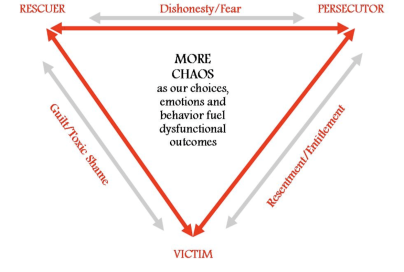
Identify how your schemas and schema modes cause you to engage in what I call "Red Triangle behavior," where your feelings, statements and behaviors are driven by your Adolescent (and Emotionally Regressed) "Little Professor," who uses the Victim, Persecutor and Rescuer stances in a misguided attempt to get your needs met:
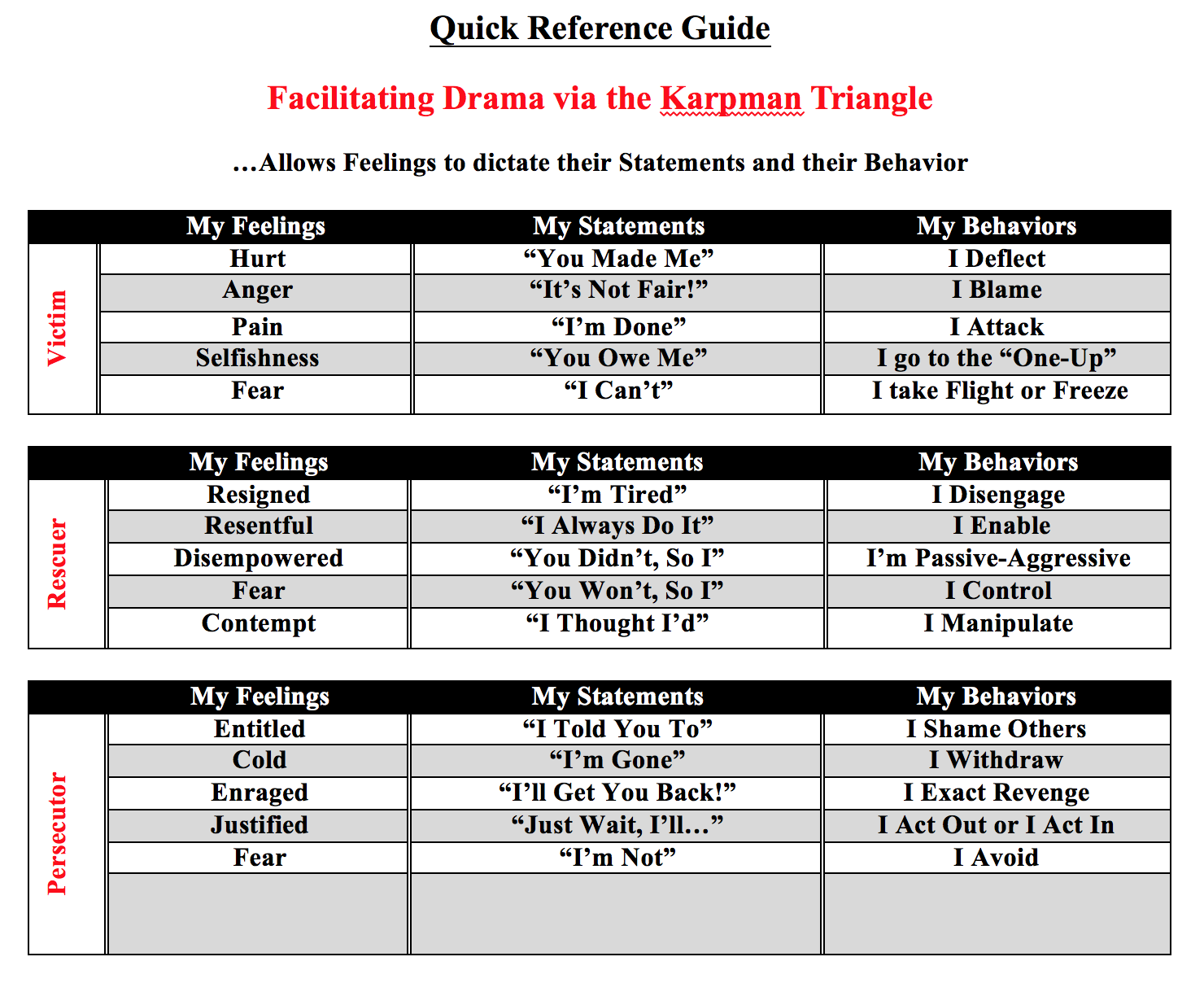 Now take a look at the Equality/Empowerment Triangle table below.
Now take a look at the Equality/Empowerment Triangle table below.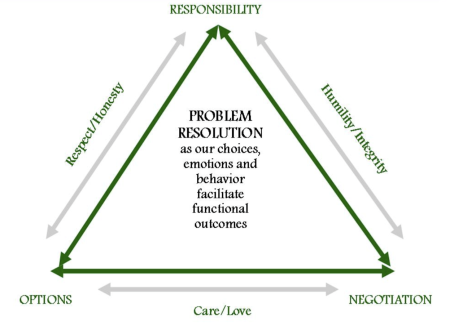
Identify how your Healthy Adult mode could help you to come to your own assistance by engaging in what I call "Green Triangle behavior," where your statements, behaviors and feelings are focused on achieving constructive, empowering and responsible outcomes for yourself and others involved.
These Healthy Adult outcomes are apt to occur when you take responsibility for your own actions, brainstorm (self or with others) what options either meet your needs or solve your problems, which means you'll use your power, energy and influence in a collaborative effort to negotiate "win-win" outcomes for yourself and the others involved.
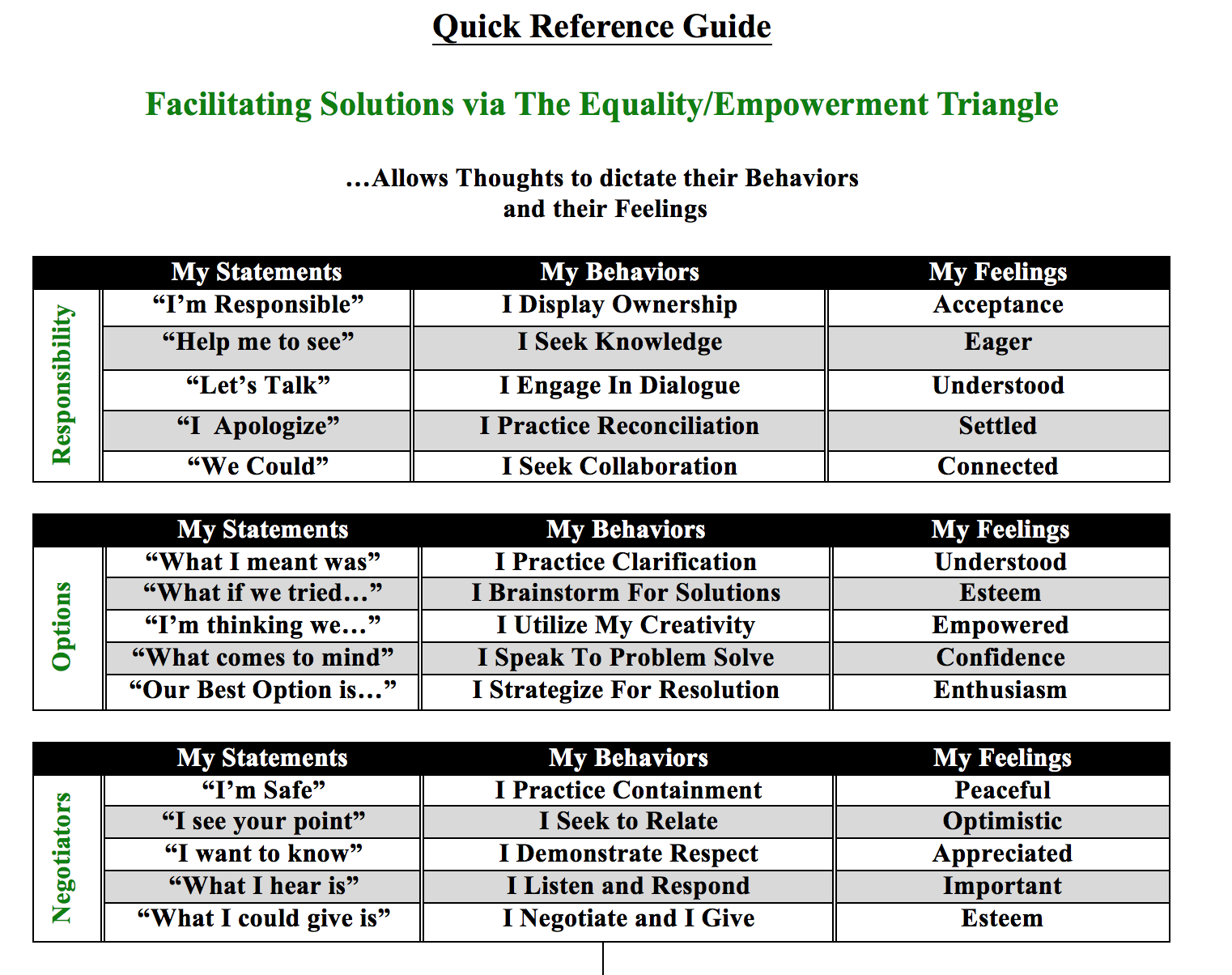
Which of these statements, behaviors and feelings do you resonate with? What from this table might your Healthy Adult (Ego state) use to try to get your needs met or work toward problem resolution?
Skills (Challenge and Change):
Challenging and Changing unwanted negative thoughts that most likely are triggered by our Schemas and Schema modes empowers us with the message that we're able to change our circumstances and predicament immediately!
What makes this work best is to know that your Adolescent Little Professor Ego State will draw upon faulty, half-baked and downright juvenile thoughts and behaviors to try to get his/her needs met or to solve problems. This is probably the worse use of your mental and emotional energy because the outcomes will always resemble something that is adolescent in "taste and flavor."
The best use of your energy is for your Healthy Adult to identify, implement, practice and benefit from the values and virtues that make sense to you that are respectful and humane, and help you to live your life genuinely, authentically and with the practice of unconditional positive regard to others (that is, if these values line up with yours!).
identify which values and virtues that you want to live by will you implement to help you and others.
Another Skill to develop is to learn how to "live your life in consultation." What this means is that one of the first things that could prove to be helpful with challenging then changing my cognitions is to practice the spiritual discipline called Fellowship. Fellowshipping helps us to "live in consultation" with other people who are wiser, have answers, could provide guidance and help us to "drop the rock" of self-abuse or to not abuse others by engaging in Red Triangle thinking or behavior(s).
On the contrary, these "Yodas" (i.e., Pastors, Priests, Therapists, Sponsors, Coaches, Spiritual Guides or Healthy Adult role models) that we're encouraged to fellowship with will also "re-mind" us to use our energy constructively by considering truthful, corrective and affirming behaviors that we could employ to obtain positive outcomes with our thinking. These "as iron sharpens iron, so one person sharpens another" encounters model how we're able to come to our own assistance quickly and regularly for our own well being.
3) TERMINATE Defenses and Distortions: Terminate any destructive Ego Defenses or Cognitive Distortions that our maladaptive schemas want to use to “protect” us, but really keep us stuck in child-like ways of operating.
"One of the keys in any healthy relationship is a willingness to say 'I'm more interested in understanding what you're saying than in thinking of what I'm going to say once you're done talking.'" From It Takes Two to Tango by Gary and Norma Smalley.
Goal (Terminate): To cease and eliminate the harmful practice of using Ego Defenses and Cognitive Distortions in intrapersonally (within ourself) and interpersonally (with others in our lives).
To accomplish this goal, we'll need to identify which Ego Defenses we use or "default to" that sabotage our ability to operate as healthy and functional Adults (if you need to review their description, click here):
- Acting Out
- Attacking
- Avoidance
- Denial
- Displacement
- Dissociation
- Emotionality
- Fixation
- Fantasy
- Help-Rejection Complaining
- Intellectualization
- Passive-Aggression
- Projection
- Provocation
- Rationalization
- Reaction Formation
- Regression
- Resistance
- Somatization
- Undoing
- Always Being right
- Blaming
- Catastrophizing
- Controll Fallacies
- Emotional Reasoning
- Fallacy of Change
- Fallacy of Fairness
- Filtering
- Global Labeling
- Heaven's Reward Fallacy
- Jumping to Conclusions
- Personalization
- Polarized Thinking
- The "Shoulds, Musts and Oughts"
Activities (Terminate):
This is the last self-exploration step in the "A-C-T-I-V-E" model that focuses on unearthing parts of our "negative past." We use defense mechanisms typically because we feel anxiety or threatened, and we're more likely to employ cognitive distortions if we're depressed or anxious.
a) So if you've not done so up to this point, I'd like to encourage your to check in with a Psychiatrist, Medical Doctor, Psychologist or Psychotherapist for an evaluation to determine if you're struggling with clinical depression, anxiety or if there is a medical problem that could be the genesis of any problematic thinking and behavior.
These skilled individuals are able to assess if there are "biological - psychological - social - spiritual" factors that could be impacting your thinking and your mood, and they're able to suggest a treatment regimen that could improve your health in all of these important areas of your life.
b) The activities that you practiced earlier to gain Awareness and to Challenge and Change your Schemas will be useful here, as those same skills are necessary to identify when Ego Defenses and Cognitive Distortions are "bubbling up" in your mind and are threatening to derail you from operating in your Healthy Adult mode.
Applying the "Column A" (Identifying Defenses and Distortions) and "Column B" (Values to Live by) will be useful in your endeavor to terminate negative processes as you replace them with positive and constructive process that are helpful.
So as we did in the "Activities" portion of Challenge and Change with our Maladaptive Schemas, lets apply the same Column A/Column B exercise with our Ego Defenses and Cognitive Distortions:
Create a table where in Column A you'll record the Ego Defenses and Cognitive Distortions thoughts that are triggered.
In Column B you'll log the Healthy Adult responses that are based on the values that you wish to practice to change your outcome:
What follows are examples of Column A (Defenses/Distortions), followed by Column B (Constructive Values) for you to consider:
- Example 1:
- Column A (Defense is Acting Out): "I can't handle this anymore...I need a drink."
- Column B (Value is Recovery Skills): "I need to call Bill. He told me to get in touch with him when I felt like this."
- Example 2:
- Column A (Defense is Emotional Regression): "Who does he think he is? Calling me a con artist? I feel like punching him in the face."
- Column B (Value is Responsibility): "I'm peeved but I know that behavior isn't going to solve anything. Why would he say something like that? Besides I do need to exert more responsibility with my words and actions."
- Example 3:
- Column A (Distortion is Fallacy of Change): "Even if he doesn't want to hear this, he's going to hear it from me because maybe that'll make him treat me differently."
- Column B (Value is Gentleness): "Wait a minute; I don't operate that way anymore; that's not how I want to solve this; he really doesn't deserve my venom...he needs a kind and thoughtful word here. Thats better."
- Example 4:
- Column A: (Distortion is Jumping to Conclusions): "Hmm, a hug and a kiss. Whats he up to? Here comes the ask for sex, which is all he ever wants from me."
- Column B: (Value is Openness and Love: "I'm thankful that he is trying to be warm, tender and compassionate. I could really use more of this!"
As implied in the "A-C-T-I-V-E" model, you'll want to remain "active" in your self-discovery to determine when defenses and distortions occur, and you'll want to "act" immediately to challenge and terminate unhelpful thinking and behavioral processes in order to eliminate occurrences of "reactive" behavior, which serves no useful purpose.
Equally, replacing the negative thoughts with alternative, constructive and positive thoughts about your situation thats more in line with the values you elect to live by is just as helpful.
Skills (Terminate):
We terminate destructive Ego Defenses and Cognitive Distortions that negatively impact us by employing Choice, Decision and Commitment, which are three important Values to develop and live by.
Employing Choice is empowering because it reminds us that we have the ability to "think outside the box" about the Options that are available to us to create and remedy the issues which with we're faced.
Employing Decision means we've taken responsibility to make a choice, own our choice, then engage in self-guided behaviors (infused by living in consultation with others) to develop and grow "desired outcomes." This very act of being intentional with our decision means we won't be giving our energy to develop "unwanted mental and behavioral outcomes."
Employing Commitment is helpful because it means Trust will be established and built, as commitment infers we operate in and deliver consistent, reliable, dependable and predictable thinking, behavioral and growth processes for our benefit and for the benefit of others. Employing this form of commitment ensures we'll become trustworthy people who could be counted on because we practice values that facilitate trust.
Employing Choice, Decision and Commitment are skills that our Healthy Adult develops and uses to help us to grow beyond our "child-like" ways of operating and into the maturer person who develops, delivers and lives by values that are fruitful and edifying.
As we learned in the previous post with (Part 2 of 3), today, we get to terminate Defenses and Distortions and replace them with Efficacy, Empowerment and any other of the "Empowering E's" that are useful to us, because they help us to create saner outcomes and experience saner living!
Equally, we also learned that no matter what our Maladaptive Schemas, Schema Modes, Ego Defenses or Cognitive Distortions are, if we choose to change and work hard to change, then change is possible, because of our effort to "garden with intentionality."
4) INVESTIGATE (embrace and practice) Adult Values and Virtues: Investigate what Adult Values and Virtues make sense to us and are reasonable for us to develop and incorporate into our lives on a daily basis (especially to counterbalance our maladaptive schemas and maladaptive schema modes).
Goal (Investigate):
To identify personal values that help to protect, affirm, nurture and breathe life into us while also guiding us to develop loving, meaningful and mature relationships with others.
Activities (Investigate):
a) Create a list of Positive Affirmations about yourself (take a look at this link for an example). The purpose of this activity is to obtain a clearer idea of who are you and whats already of "great value" inside of you. By creating a list of positive affirmations about yourself you'll identify what has been, is, and what could be very important to you in your future, especially as you consider your personal wants and needs.
b) Now create a list of practical behaviors based on the Values and Virtues that are important to you that you'd like to grow and develop in the "7 Core Areas" garden of your life.
To do this exercise, take a look at what the 7 Core Areas Chart (which encapsulates who we are Biologically - Psychologically - Socially - Spiritually).
I've often described these Core Areas of who we are as "rows" in the Garden of our life that we'll want to plant very intentional values, virtues and behaviors that are important to us, and that we'll harvest and be edified by. Based on the definitions of each of the 7 areas, which "Valuable Values" do you wish to plant, grow, nurture, develop, harvest, consume, be strengthened and edified by in your life, marriage, family and to have your legacy identified by?
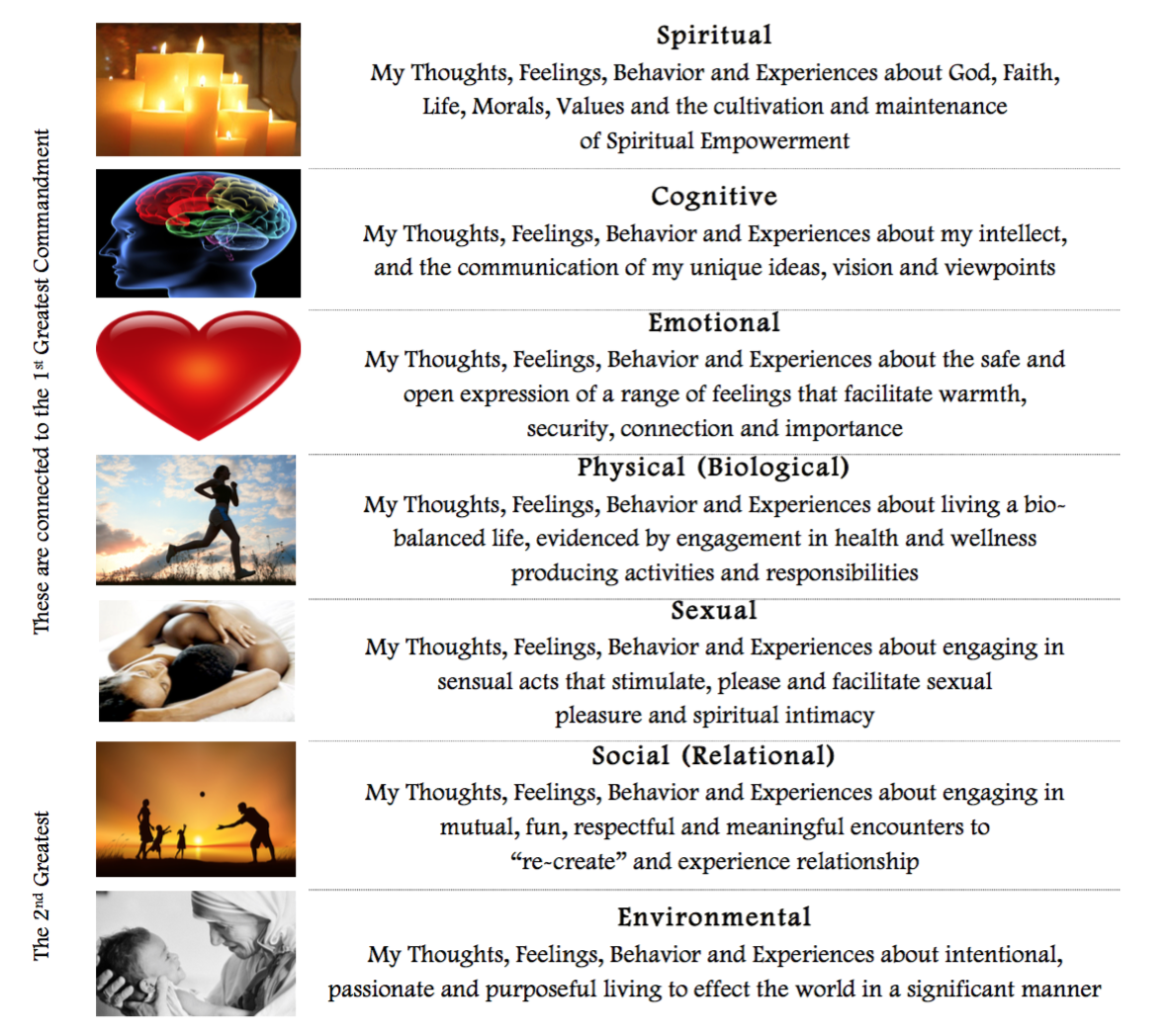
Here's a brief example of the Values (in parentheses) and the practical behaviors that I'm currently growing, developing and harvesting in the "rows" of my 7 Core Area garden:
- Spiritual (Personal Enlightenment): "I'm going to accomplish this by reading inspirational literature and writings on a daily basis so I'm able to see then practice how I can become a better person."
- Cognitive (Mindfulness and Empathy): "I'm going to think carefully about what I'm going to say, knowing my words impact positively or negatively. Equally, I'm going to ask open-ended questions to gain more knowledge of your needs."
- Emotional (Validation and Expression): "I'm going to validate your feelings, your experience and your reality, and not attempt to change it, because its yours. Equally, I'm going to engage in emotional self-awareness so that I'll be able to communicate my feelings to you in "real time."
- Physical/Biological (Decision and Commitment): "I'm going cut back on unhealthy foods that I eat in addition to add healthier selections to my diet. I'm glad that we've joined the new gym and I'm going to remain committed to exercising 4 times a week."
- Sexual (Romance and Care): "I'm going to make a conscious decision to 'make love to you outside of the bedroom' by dating you and delivering your love language to you so that will increase our interest and energy as we consider what goes on in our bedroom."
- Social/Relational (Conflict Resolution): "I'm going to use my communication tools to work through and resolve our conflict within 12-24 hours, so that I (and maybe we) eliminate the 'sweeping things under the rug' avoidance tactic."
- Environmental (Altruism): "I'm going to be open regarding how I could help pole by giving back, through my church, civic, fellowship or community organizations and in the process, feel good about myself and how others will feel as a result of my choices."
So what values have you identified that you'll focus on and intentionally plant in the 7 rows of your life garden? What values will you develop and deliver?
c) Make a list of the Character Defects (in italics) that have surfaced due to the presence of maladaptive schemas, schema modes, ego defenses and cognitive distortions. Then identify the "Character Values" (underlined) that you've chosen to live by that will replace your defects, along with what you hope to grow in your garden. Here's my list (Character Defect → Character Value):
- Abusing others for my enjoyment → Safety: Becoming a safe person and creating safe experiences and environments for others in my presence.
- Being Argumentative → Communication: Learning processes that help me to resolve conflict.
- Beating myself (or others) up → Ministering to Self and Others: Prime components of Healing, which are rooted in trying to be therapeutic to myself and others.
- Avoiding communication → Assertive: Taking the first step to address or resolve my current problems.
- Being Fearful → Love: The practice of the adult characteristic of love guides me to move beyond my child-like fear based reactions toward functional, practical and mature expressions of the characteristic.
- Being traumatic to others → Energy: I want to use my energy to cultivate healthy and healing behaviors and encounters with others.
- Playing God with self → Humility: This helps me to live in the healthy middle ground of Humanity.
- Being undisciplined → Discipline: Developing and practicing self-care rituals that promote growth.
- Measuring myself against others → Acceptance: Developing serenity regarding what I cannot change and the courage to change that which I can change.
- Valuing the opinion of a sick mind (my own!) → Spirituality: Valuing my opinions because some of my rituals focus on helping me to hear from my God.
c) Take a look at this list of Character Values as found in the "Values in Action Inventory of Strengths" produced by Dr. Christopher Peterson and Dr. Martin Seligman.
- Wisdom and Knowledge: Creativity, Curiosity, Judgment, Love of Learning, Perspective.
- Courage: Bravery, Perseverance, Honesty, Zest
- Humanity: Love, Kindness, Social Intelligence
- Justice: Teamwork, Fairness, Leadership
- Temperance: Forgiveness, Humility, Prudence, Self-Regulation
- Transcendence: Appreciation of Beauty, Excellence, Gratitude, Hope, Humor and Spirituality
Which of these would you want or need to develop in your life in order to achieve positive outcomes for yourself and others? Do you recall which of these Values were demonstrated by this group of Star Wars characters at pivotal and life changing moments? Could you see yourself operationalizing them to eliminate then live beyond "Death Star thinking?"
 Skills (Investigate):
Skills (Investigate):
Identifying our values helps us to identify what our wants, needs and even our what our purpose is in life. Once we're able to identify what our values are, our Healthy Adult mode helps us to communicate them clearly with others, but most importantly to put our values into action, whereby we're able to benefit from our work.
Regarding purpose, our Values also serve as a "GPS" (Global Positioning System) that guides us to demonstrate behaviors that are meaningful, purposeful, empathetic, affirming, nurturing, honoring and loving toward ourselves and others (again, if these are your chosen values).
My hope is that you'll take some time to answer the all important question posed by philosopher Francis Schaeffer"How shall I live?"
5) VALIDATE ourselves by living according to our Values: VALIDATE ourselves by consistently living according to values, virtues and ideals that are sensible, reasonable and functional for us and others.
Goal (Validate):
To live by a new and functional "Bill of Writes" (based on the Bill of Rights), where the "Constitution" that you have written affords you with inalienable rights to continually engage in behaviors that nurture, protect and inspire yourself.
Activities (Validate): Creating Your Personal and Relational "Bill of Writes"
Now its time to pull all of your work together to create a positive, constructive, realistic, workable and living document that will serve as the new "Constitution" that you'll live by.
Think about your needs that were either not met or undeveloped from your family of origin or your past. Going forward, as a healthy, functional and responsible Adult, think about how you will replace then replenish these valuable needs on a consistent basis.
Think about how your Healthy Adult "intervenes, comforts and consults" with the Vulnerable Child part of you in order to "protect, provide and pilgrim" with you for your benefit. Going forward, what significant role will that part of yourself serve in the Constitution you'll live by?
Think about what "Middle Column" living looks like on a daily basis and the "A-B-C" skills that your Healthy Adult Mode will draw upon continuously. Going forward, what and how do you wish to edify yourself and others as you demonstrate adherence to these life-giving principles?
Finally, think about what you wish to Challenge and Change, in addition to the important Values, Virtues, ethics, mores and principles that make sense to you, that you'd like to produce in the Garden of your life, relationship, marriage or family. Going forward, will you exercise Choice, make Decisions and remain Committed to growing these behaviors consistently?
Thanks for your Reflection and Contemplation. Keep these two Values handy and close by, as they could prove to be very helpful to you on a daily basis. But for now, its time to create your "Bill of Writes." What follows is a sample "Personal and Relational Bill of Writes" that a person created. Yours will have your unique fingerprints on it, but it will be no less valuable than the one created by the author of this one.
 Skills (Validate):
Skills (Validate):
Living daily by our Bill of Writes provides us with empowering reminders that we have choices, opportunities and abilities as Adults to make informed and responsible decisions to protect, love, nurture and guide us in our efforts to become Wise or “skilled at living.”
Now, you're encouraged to be “A-C-T-I-V-E” with this model and in the words of this inspirational slogan that we've received from this 20th century...just do it. By the way, did you know that "NIKE" is actually a classical Greek word that means "Victory?" I encourage you to relish in the elation that accompanies being victorious when you practice and continually get better at living our the "A-C-T-I-V-E" model via your newly created "Bill of Writes!"
One more thing as we close this very long post...what makes this whole model and process a success is being in a continual mindset to…
6) EVALUATE your choices and behaviors: EVALUATE if our choices and behaviors are helping us to achieve the outcomes that we want and are working toward.
Goal (Evaluate):
To determine if you are reaching the goals, skills and changes as outlined in the "A-C-T-I-V-E" model.
Activities (Evaluate):
a) I encourage you to employ the "S-M-A-R-T" Goal approach to evaluating your progress by working the following questions into your process:
- Specific: What do I want to accomplish?
- Measurable: What tangible evidence supports that I'm hitting my targets?
- Appropriate: What characteristic( s) do I need to develop to be successful in this "micro-season" (defined as 3 - 4 months)?
- Realistic: What people, behaviors or experiences do I incorporate in this process to be successful?
- Time-Focused: Whats the time frame I'm setting for myself to cultivate this characteristic or aspect of my life?
b) At the end of the day, engage in a "spot check inventory" where you evaluate your behaviors by responding to the following questions:
- What am I most proud of today?
- What is one thing that I regret about today?
- What will I seek to improve upon or correct tomorrow?
- Which two values will I seek to implement and develop tomorrow?
Skills (Evaluation):
Remember, the English word “Evaluation” comes from the French word “Evaluer,” which means “to find the value of.” Employing the "S-M-A-R-T" goals approach in addition to taking a brief personal inventory at the end of the day will determine if you're making progress with your stated change processes.
Reflection and Contemplation coupled along with Intentionality will go a long way toward helping you to achieve the behavioral outcomes that are important to you.
Whats also important is at times you'll need (or want) to recalibrate" your choices and decisions within the "A-C-T-I-V-E" model in order to "course correct" your behavior immediately. quickly obtain the outcomes you want to make any necessary changes to stimulate productive growth outcomes per our values for ourselves and others.
Finally, by operationalizing the steps of the "A-C-T-I-V-E" model, we're encouraged to enjoy the fruit of our labor thats connected to being responsible, creative and diligent in our work of living according to our values!
So thank you for reading through this very long three part series on Schemas, Schema Modes, Defenses and Resolutions!
Most of us know about the end of Darth Vader. Just in case you missed it, here's a link to the final 3 minutes of his life in Star Wars VI: Return of the Jedi:
What happened to Darth Vader is what happened to each of the Star Wars characters we looked at earlier. Per Joseph Campbell (remember, The Hero's Journey) and George Lucas, they all experienced a "Resurrection" where they overcame their fear, anguish, avarice and suffering to become successful beyond their private battle(s) and to emerge victorious, reborn and a new man or woman.
How about you? Will you embark and remain committed to your own personal Hero's Journey and experience not only the decimation of Death Star thinking but also the birth of your caring, wise and loving Healthy Adult? Remember, the Force will be with you always and I pray you too will experience a new hope in your life and even though I'm posting this on May 3rd, May the Fourth be with you always!
Future posts on Choosing Change will be labeled “Choosing Change #9,” “Choosing Change #10,” “Choosing Change #11” and so on.
Also, as time permits, please visit the other blogs written by Dr Ken McGill: Daily Bread for Life and “3 – 2 – 5 – 4 – 24″ for additional information that could be helpful. I welcome your comments below or via email and your favorites, your retweets and your “+1’s” if you have a brief moment and find the information helpful. Again, it is my desire to provide the very best info for your consideration.


No comments:
Post a Comment